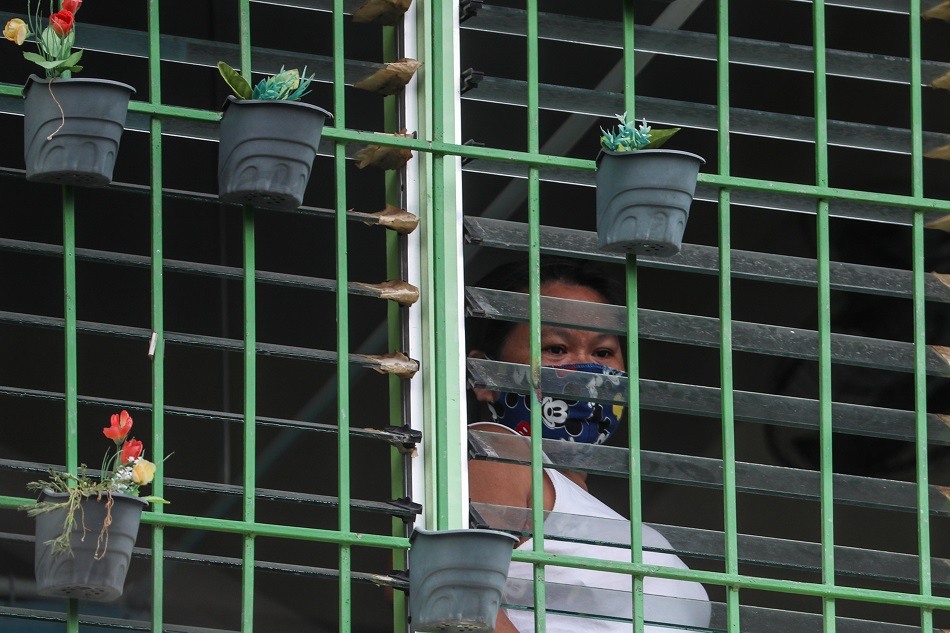How opening a window could help you avoid COVID
ADVERTISEMENT

Welcome, Kapamilya! We use cookies to improve your browsing experience. Continuing to use this site means you agree to our use of cookies. Tell me more!
How opening a window could help you avoid COVID
Paul Ricard,
Agence France-Presse
Published Oct 09, 2020 02:37 AM PHT
PARIS - While billions are being spent on the search for a COVID-19 vaccine and treatment, experts say there may be something you can do to help avoid the virus that costs nothing: open the window.
PARIS - While billions are being spent on the search for a COVID-19 vaccine and treatment, experts say there may be something you can do to help avoid the virus that costs nothing: open the window.
Growing evidence suggests that allowing air to circulate around enclosed spaces can help disperse the airborne viral droplets that cause infection.
Growing evidence suggests that allowing air to circulate around enclosed spaces can help disperse the airborne viral droplets that cause infection.
These fine clouds of particles, known as aerosols, are thought to be able to remain suspended in the air for long periods, even hours.
These fine clouds of particles, known as aerosols, are thought to be able to remain suspended in the air for long periods, even hours.
That's where reaching for the window latch may help.
That's where reaching for the window latch may help.
ADVERTISEMENT
Epidemiologist Antoine Flahault likened dispersing the viral cloud to airing out a room when someone is smoking.
Epidemiologist Antoine Flahault likened dispersing the viral cloud to airing out a room when someone is smoking.
"What do you do? You open a window to let the smoke out," he told AFP. "And it's the same for these invisible coronavirus aerosols."
"What do you do? You open a window to let the smoke out," he told AFP. "And it's the same for these invisible coronavirus aerosols."
The American Centers for Disease Control updated its advice this week to include guidance on enclosed areas.
The American Centers for Disease Control updated its advice this week to include guidance on enclosed areas.
"Avoid crowded indoor spaces and ensure indoor spaces are properly ventilated by bringing in outdoor air as much as possible," it now says on its website.
"Avoid crowded indoor spaces and ensure indoor spaces are properly ventilated by bringing in outdoor air as much as possible," it now says on its website.
CHEAP, EFFECTIVE
The CDC has added aerosols to its official list of coronavirus transmission routes, although the main way the virus spreads is still through respiratory droplets emitted by infectious individuals.
The CDC has added aerosols to its official list of coronavirus transmission routes, although the main way the virus spreads is still through respiratory droplets emitted by infectious individuals.
ADVERTISEMENT
Experts in other countries have argued for months for more rigorous measures to dispel the threat of aerosol transmission, which were largely absent from public health guidance at the start of the pandemic.
Experts in other countries have argued for months for more rigorous measures to dispel the threat of aerosol transmission, which were largely absent from public health guidance at the start of the pandemic.
Germany is one country where official guidance encourages people to leave the windows open.
Germany is one country where official guidance encourages people to leave the windows open.
Chancellor Angela Merkel said last month that ventilation "could be one of the least expensive and most effective measures to stop the propagation of the pandemic."
Chancellor Angela Merkel said last month that ventilation "could be one of the least expensive and most effective measures to stop the propagation of the pandemic."
Bernhard Junge-Hulsing, a German doctor, advised people to keep the windows open, at home or at work, even as winter approaches.
Bernhard Junge-Hulsing, a German doctor, advised people to keep the windows open, at home or at work, even as winter approaches.
"You can always wear a pullover," he said.
"You can always wear a pullover," he said.
ADVERTISEMENT
HOST OF MEASURES
But how much ventilation is enough to disperse the aerosol?
But how much ventilation is enough to disperse the aerosol?
"We recommend a total recirculation of the air in a room at least six times an hour. That takes quite a lot," said Flahault, director of the University of Geneva's Global Health Institute.
"We recommend a total recirculation of the air in a room at least six times an hour. That takes quite a lot," said Flahault, director of the University of Geneva's Global Health Institute.
In certain settings, this can be achieved by circulation systems, which are often fitted with high-tech filters that also cleanse the air.
In certain settings, this can be achieved by circulation systems, which are often fitted with high-tech filters that also cleanse the air.
"Six times an hour is what you find onboard a TGV (high-speed train) or airplane, where the air quality is very good," said Flahault.
"Six times an hour is what you find onboard a TGV (high-speed train) or airplane, where the air quality is very good," said Flahault.
"But in most closed spaces we don't have that level of ventilation."
"But in most closed spaces we don't have that level of ventilation."
ADVERTISEMENT
Although opening windows could help avoid spreading the coronavirus, experts stress that no single measure can guarantee protection.
Although opening windows could help avoid spreading the coronavirus, experts stress that no single measure can guarantee protection.
"Limit the number of people in the room, don't stay in it too long, maintain social distancing, wear a mask at all times, wash your hands regularly and try not to talk or shout too much," said Flahault.
"Limit the number of people in the room, don't stay in it too long, maintain social distancing, wear a mask at all times, wash your hands regularly and try not to talk or shout too much," said Flahault.
Read More:
window
window COVID-19
window coronavirus
COVID-19
coronavirus
COVID-19 updates
coronavirus updates
COVID-19 transmission
coronavirus transmission
airborne virus
ADVERTISEMENT
ADVERTISEMENT



